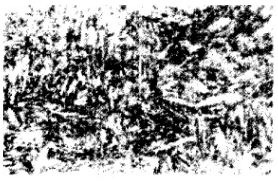In production, sometimes there will be insufficient hardness after quenching, which is a common defect in the process of heat treatment quenching. “Insufficient hardness” has two kinds of performance, one kind of performance is the whole workpiece hardness value is low, the other kind of performance is the local hardness is not enough or soft point. When the phenomenon of insufficient hardness, to use hardness test or metallographic analysis and other methods to analyze what kind of “insufficient hardness”, and then from the raw materials, heating process, cooling medium, cooling method and tempering temperature and other aspects to find reasons, so as to find solutions
1 The quenching heating temperature is low and the holding time is insufficient
Such as hypoeutectoid steel, when the heating temperature is between Ac3 and Ac1 (for example, 25# steel quenching heating temperature is below 860℃), because the ferrite is not completely dissolved into austenite, quenching can not get uniform martensite, ferrite and martensite, affecting the hardness of the workpiece. Metallographic analysis shows undissolved ferrite.
For high carbon steel, especially high alloy steel, if insufficient heating or holding time will cause pearlite to austenite transformation, but not martensite. In actual production, the above situation is often due to the deviation of instrument indication (indicating high temperature) or uneven furnace temperature, so that the actual temperature of the workpiece is low; The insulation time is too short due to the wrong estimation of workpiece thickness.

Solutions:
1) Control the heating speed, avoid heating speed too fast, resulting in uneven furnace temperature, and will cause premature insulation timing, so that the insulation time is insufficient;
2) Regularly check whether the temperature indicating instrument is intact and accurate to avoid the phenomenon that the actual temperature is insufficient when the indicating instrument shows the temperature;
3) The quenching heating rate and heating temperature shall be determined strictly according to the material manual to prevent the quenching temperature from being too low or too high;
4) Correctly estimate material thickness, especially irregular parts.
2 Quenching the heating temperature is too high and the holding time is too long
For tool steels (such as T8 steel), austenite and carbide (Fe3C) are obtained when the quenching heating temperature is 780℃. At this time, the amount of carbon dissolved by austenite is slightly higher than 0.77%, and the austenite changes to martensite after cooling. If the heating temperature or holding time is too long, will cause the carbide (Fe3C) into austenite, the carbon in the austenite caused by dissolved carbon on the high side, at the same time greatly increase its stability, austenite to martensite (A – M), the temperature began to decline, and after quenching in retained A large amount of residual austenite, the organization for M + A ‘, As the residual austenite has the austenite property, that is, the hardness is low, so the hardness decreases after quenching. Effect of heating temperature and tempering temperature on residual austenite content
Solutions:
1) Strictly control the quenching heating temperature and holding time to prevent excessive carbon from melting into austenite, and control the heating temperature is more important;
2) Reduce the quenching cooling rate, or use the step quenching, so that the undercooled austenite is fully transformed into martensite;
3) Cold treatment is used to transform residual austenite into martensite;
4) Using high temperature tempering, reduce residual austenite, hardness will increase instead.
2.3 During quenching heating, the workpiece surface is decarbonized
After quenching of 45 # steel, through metallographic analysis, its surface for ferrite and low carbon martensite, and after grinding in addition to surface decarburization layer, hardness requirements, this often appeared in the chamber furnace without protection or protect the poor, or in the wild in the salt bath heat, oxygen and artifacts caused by the carbon atoms reaction CO, decreased the surface carbon content, To make its surface hardness is insufficient.
Solutions:
1) Non-oxidation heating furnace with protective atmosphere, such as alcohol, methanol cracking protective atmosphere and other methods;
2) vacuum heating quenching;
3) for general box furnace can be used raw iron filings or charcoal packing seal; The surface of the workpiece is coated with anti-oxidation coating; Put charcoal in the furnace; The workpiece is coated with boric acid and alcohol solution and then heated.
If you have any questions,pls feel free to contact us.
e-mail:bearing6@hyzcgroup.com
- YRT rotary table bearing
- YRTS rotary table bearing (high speed series)
- YRTM with integral angular measuring system series
- ZKLDF axial angular contact ball bearing series
- RA series crossed roller bearing
- SX series crossed roller bearing
- CRBH series crossed roller bearing
- RE series crossed roller bearing
- RU series crossed roller bearing
- RB series crossed roller bearing
- XR/JXR series crossed taper roller bearing
- Crossed roller bearing

✉️ bearing20@hyzcgroup.com
📞 +86 15236685001





